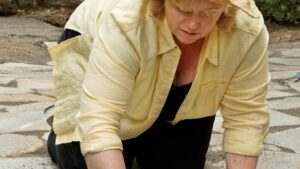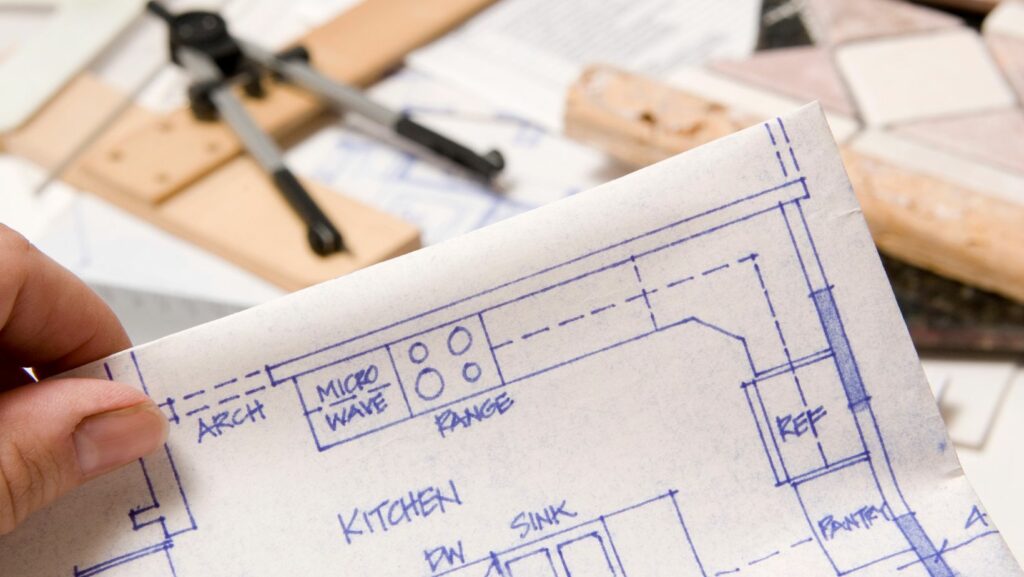DIY Outdoor Projects
- Creativity and Personal Expression: DIY outdoor projects allow individuals to express creativity while enhancing the beauty and functionality of outdoor spaces such as gardens, patios, and backyards.
- Planning is Essential: A structured planning approach helps align project goals with available resources, ensuring a smoother workflow and successful outcomes.
- Budget-Friendly Options: DIY projects can be cost-effective, often utilizing reused or recycled materials, which helps manage expenses while improving aesthetics and function.
- Safety Considerations: Prioritizing safety through the use of protective gear and awareness of local regulations is crucial when engaging in outdoor projects.
- Variety of Project Ideas: From building garden beds and seating options to enhancing curb appeal with decorative features, there’s a wide range of DIY outdoor projects suited for various skill levels.
- Sustainability Practices: Embracing eco-friendly materials and techniques in DIY outdoor projects significantly benefits the environment, promoting biodiversity and reducing waste while enhancing outdoor spaces.
Transforming outdoor spaces can be both fun and rewarding. DIY outdoor projects offer a chance to unleash creativity while enhancing the beauty and functionality of gardens, patios, and backyards. Whether it’s building a cozy fire pit, crafting a vertical garden, or creating charming outdoor furniture, these projects can elevate any outdoor area.
Not only do DIY projects allow for personal expression, but they also provide an opportunity to bond with family and friends. With a little planning and the right materials, anyone can tackle projects that suit their skill level and style. Dive into the world of DIY outdoor projects and discover how simple enhancements can lead to a more inviting and enjoyable outdoor experience.
Overview of DIY Outdoor Projects
DIY outdoor projects encompass a variety of activities aimed at enhancing outdoor spaces. These projects include building structures, creating landscapes, and crafting functional furniture. Individuals explore ideas like pergolas, raised garden beds, and decorative pathways.
DIY outdoor projects promote creativity, providing opportunities for personal expression. Engaging in these tasks fosters a sense of accomplishment when seeing the completed work. Additionally, these projects often strengthen relationships, as family and friends collaborate to transform spaces together.
Planning plays a crucial role in successful outdoor projects. Identifying goals, assessing skills, and gathering appropriate materials lead to satisfying outcomes. Resources such as instructional videos and guides simplify the learning process.
Cost-effectiveness defines many DIY projects. Individuals typically save money by using reused or recycled materials. Budgeting helps manage expenses while selecting items to enhance both aesthetics and functionality.
Safety remains a critical consideration in executing outdoor projects. Using gloves, goggles, and masks minimizes risks when handling tools and materials. Familiarity with local regulations ensures compliance with guidelines when constructing permanent features.
Exploration of various DIY outdoor project ideas inspires innovation. Choices range from simple birdhouses to elaborate outdoor kitchens. No matter the complexity, these projects contribute positively to outdoor living experiences.
Planning Your DIY Outdoor Projects
Planning ensures a successful DIY outdoor project by aligning each task with personal goals and available resources. Individuals benefit from a structured approach that considers location, tools, and materials before diving into any undertaking.
Choosing the Right Space
Choosing the right space is crucial for any DIY outdoor project. Factors to consider include:
- Exposure to Elements: Assess sunlight, shade, wind patterns, and drainage.
- Accessibility: Ensure easy access for tools and materials.
- Proximity to Utilities: Consider water and electricity if needed for the project.
- Aesthetic Appeal: Select areas that enhance the overall look of the yard.
Each element contributes to how well outdoor projects integrate into existing landscapes.
Assessing Tools and Materials
Assessing tools and materials streamlines the project and increases safety. Key steps include:
- Inventory Existing Tools: Evaluate already owned tools, like saws, drills, and hammers.
- Identify Required Materials: List necessary items such as wood, stone, or paint.
- Budgeting: Set a budget to avoid overspending on materials.
- Safety Gear: Ensure proper protective gear like gloves, goggles, and masks are available.
These assessments create a clear foundation, promoting efficiency and effectiveness during execution.
Popular DIY Outdoor Projects
Transforming outdoor spaces includes a variety of engaging DIY projects that enhance beauty and functionality. Here are some popular options to consider.
Garden Beds and Planters
Creating garden beds and planters allows for efficient use of space while promoting gardening. Individuals can choose raised beds or in-ground options based on preferences.
- Raised Garden Beds: Construct raised beds using materials like untreated wood or bricks. They improve drainage and soil warmth, making gardening easier.
- Vertical Planters: Utilize wall-mounted planters or tiered structures to maximize vertical space. These designs are ideal for small yards or patios.
- Container Gardens: Use pots or large containers for growing herbs or flowers. This approach offers flexibility, allowing for easy relocation based on sun exposure.
Outdoor Seating Options
Outdoor seating options elevate comfort and social interaction in outdoor areas. Several styles cater to different aesthetics and needs.
- Benches: Build simple benches from wood or repurposed materials. These create a cozy gathering spot without taking up too much space.
- Adirondack Chairs: Construct iconic Adirondack chairs for relaxed seating. They provide an inviting area for conversations or enjoying nature.
- Swing Seats: Add a swing seat from sturdy materials to enhance leisure spaces. These seats provide both comfort and a playful element to yards.
Enhancing Curb Appeal
Enhancing curb appeal through DIY outdoor projects contributes significantly to the overall aesthetic of a home. Simple upgrades to pathways, walkways, and decorative features create inviting spaces that reflect personal style.
Pathways and Walkways
Creating pathways and walkways improves accessibility while adding elegance to outdoor areas. Consider these design options:
- Stone Pavers: Laying stone pavers forms durable, visually appealing paths. Arrange them in patterns for added interest.
- Gravel Walkways: Installing gravel walkways offers a low-cost option. It allows for effective drainage and provides a rustic charm.
- Wooden Boardwalks: Building wooden boardwalks enhances pathways in garden beds. Use treated lumber for durability against the elements.
- Solar Lights: Adding solar lights along pathways increases safety and highlights beautiful landscape features at night.
Decorative Features
Incorporating decorative features enhances the character of outdoor spaces. Focus on these aspects:
- Window Boxes: Installing window boxes allows for vibrant flower displays. Choose seasonal plants for continuous color and interest.
- Garden Trellises: Constructing garden trellises provides vertical dimension and supports climbing plants. This elevates the garden’s visual appeal and creates privacy.
- Outdoor Art: Creating or displaying outdoor art adds a unique personal touch. Consider sculptures or wall hangings designed for outdoor use.
- Custom Mailboxes: Crafting custom mailboxes enhances functionality while reflecting personal style. Use materials that match home design or incorporate unique colors.
These DIY projects, such as designing pathways and adding decorative features, contribute to the overall curb appeal of a property, fostering a welcoming atmosphere.
Sustainability in DIY Outdoor Projects
Sustainability plays a crucial role in DIY outdoor projects, encouraging the use of eco-friendly materials and practices. Choosing locally sourced materials reduces the carbon footprint associated with transportation. For instance, using reclaimed wood for furniture minimizes deforestation and waste.
Incorporating native plants into landscaping projects promotes biodiversity and conserves water. Native plants require less maintenance and support local ecosystems, making them a sustainable choice for gardens. For example, creating a pollinator garden with native flowers benefits bees and butterflies.
Utilizing recycled materials significantly enhances sustainability in outdoor projects. Repurposed items, such as old tires transformed into planters or pallets turned into garden beds, prevent waste and add character. This approach not only showcases creativity but also lessens reliance on new resources.
Implementing water conservation techniques aligns with sustainable practices. Installing rain barrels collects runoff from roofs, providing a resource for irrigation. Additionally, creating permeable surfaces with gravel or porous pavers allows rainwater to replenish groundwater, reducing runoff and erosion.
Maintaining energy efficiency in projects like outdoor lighting can further contribute to sustainability. Solar-powered lights offer illumination without relying on electricity, decreasing energy consumption. Using energy-efficient LED bulbs for existing fixtures also minimizes environmental impact.
Promoting sustainable gardening practices is essential. Employing compost and organic fertilizers enhances soil health while reducing chemical runoff into local waterways. Also, practicing crop rotation and companion planting can naturally manage pests and improve yields without harmful pesticides.
By incorporating sustainable methods and materials, DIY outdoor projects can significantly benefit the environment while enhancing the beauty and functionality of outdoor spaces.
Enhancing Outdoor Spaces
Embracing DIY outdoor projects opens up a world of possibilities for enhancing outdoor spaces. With creativity and a bit of planning, anyone can transform their gardens and patios into inviting retreats. These projects not only elevate aesthetics but also foster a sense of community and personal achievement.
By prioritizing sustainability and resourcefulness, individuals can create beautiful environments while being mindful of their ecological impact. Whether it’s building a cozy fire pit or designing a vibrant garden, the journey of DIY projects enriches outdoor living experiences and strengthens bonds with family and friends. Now’s the perfect time to dive into these rewarding endeavors and watch outdoor spaces come to life.



